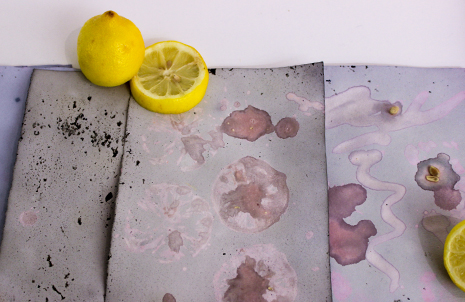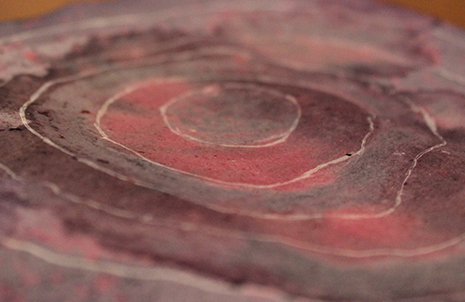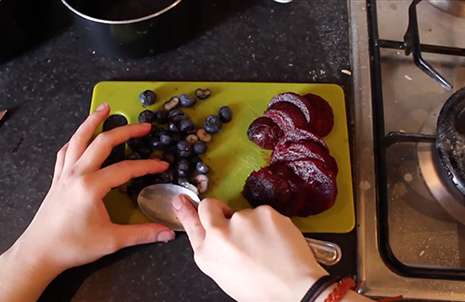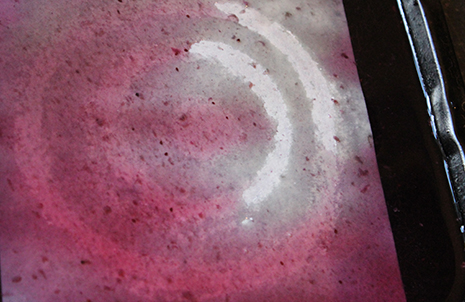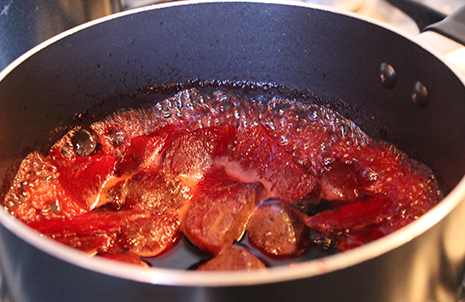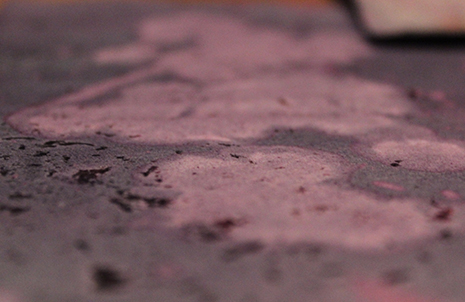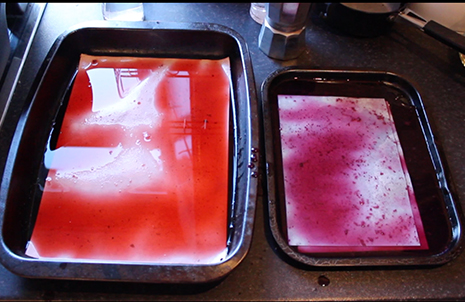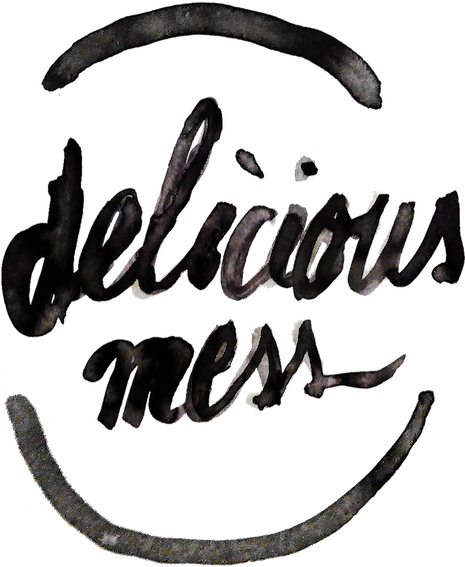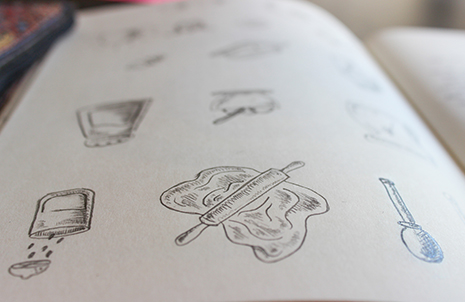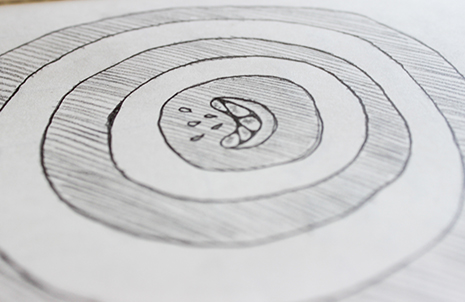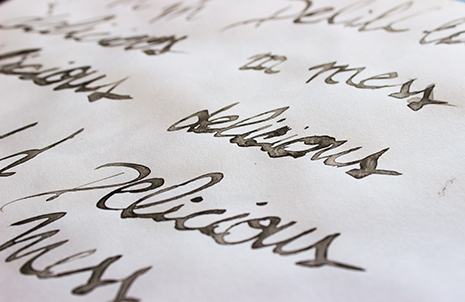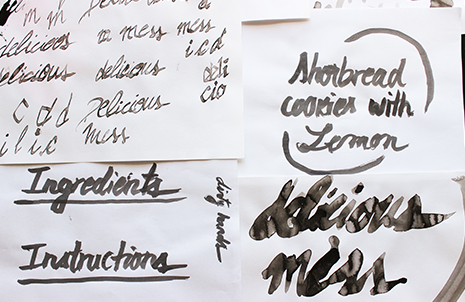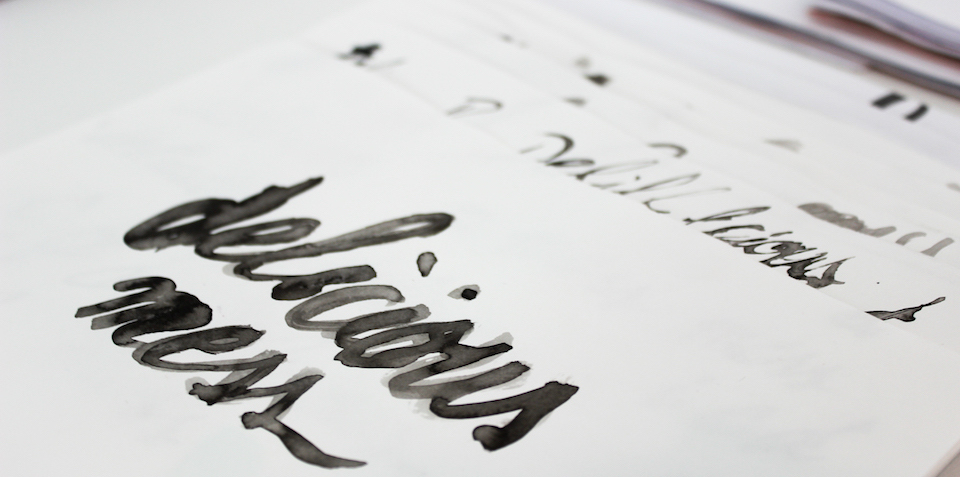
DELICIOUS MESS VISUAL IDENTITY
Delicious Mess is an interactive cookbook that incites the user to embrace the messy side of cooking. The book is used like a cooking tool, and contains fun experiments and hidden recipe parts that can only be shown when you stain it. This gives people the possibility to become more comfortable treating a book in an unusual way, and finding creative ways to interact with it.
To see the a more detailed explanation of Delicious Mess click here.
DRAWINGS AND TYPOGRAPHY
Given the fact that the most present theme in my feedback was the way the instructions were communicated, I analysed step by step how much and how little information I needed to put in order for them to be clear enough.
I realised the best way to do this was to have a lot of drawings and as little text as possible.
Since the concept of this cookbook is very attached to the hands, and the hand-made feel, I decided to do my own drawings and typography, to give it a more organic feel, and fit the style of the cookbook.
THE COVER: PH REACTIVE PAPER
As I mentioned, the interactive cookbook idealised aims to change people’s behaviour regarding the discomfort felt in staining a cookbook with dirty hands, while still having fun. I was looking for something that would incite the user to embrace the messy side of cooking.
To create this effect, I researched different reactions food could have with paper, testing different methods and ingredients.
I found Ph reactive paper interesting, so I researched about Ph reactions between foods, and after I tried blueberries and beetroot, I found that blueberries worked wonderfully with lemon.
With this knowledge I made my own reactive paper, that changes dramatically in colour the instant you pour a low Ph ingredient on it, like lemons, and incorporated this into my prototypes to get a more truthful and credible reaction from the users.
I was very happy with this result, since it was easy to make at home for quick experiments, and also because you would create food reactions with food, and not chemicals.
This gave the users the possibility to become more comfortable treating a book in an unusual way, and finding creative ways to interact with it.
The user's reaction to this experiment was very positive, so I used Ph reactive paper for the final prototype and found a recipe that included lemon.
This meant that this reaction became a crucial part of the experience with this Delicious Mess Recipe. Furthermore, the visual outcome was very appealing, with beautiful colours. At this point, the cover was decided.
